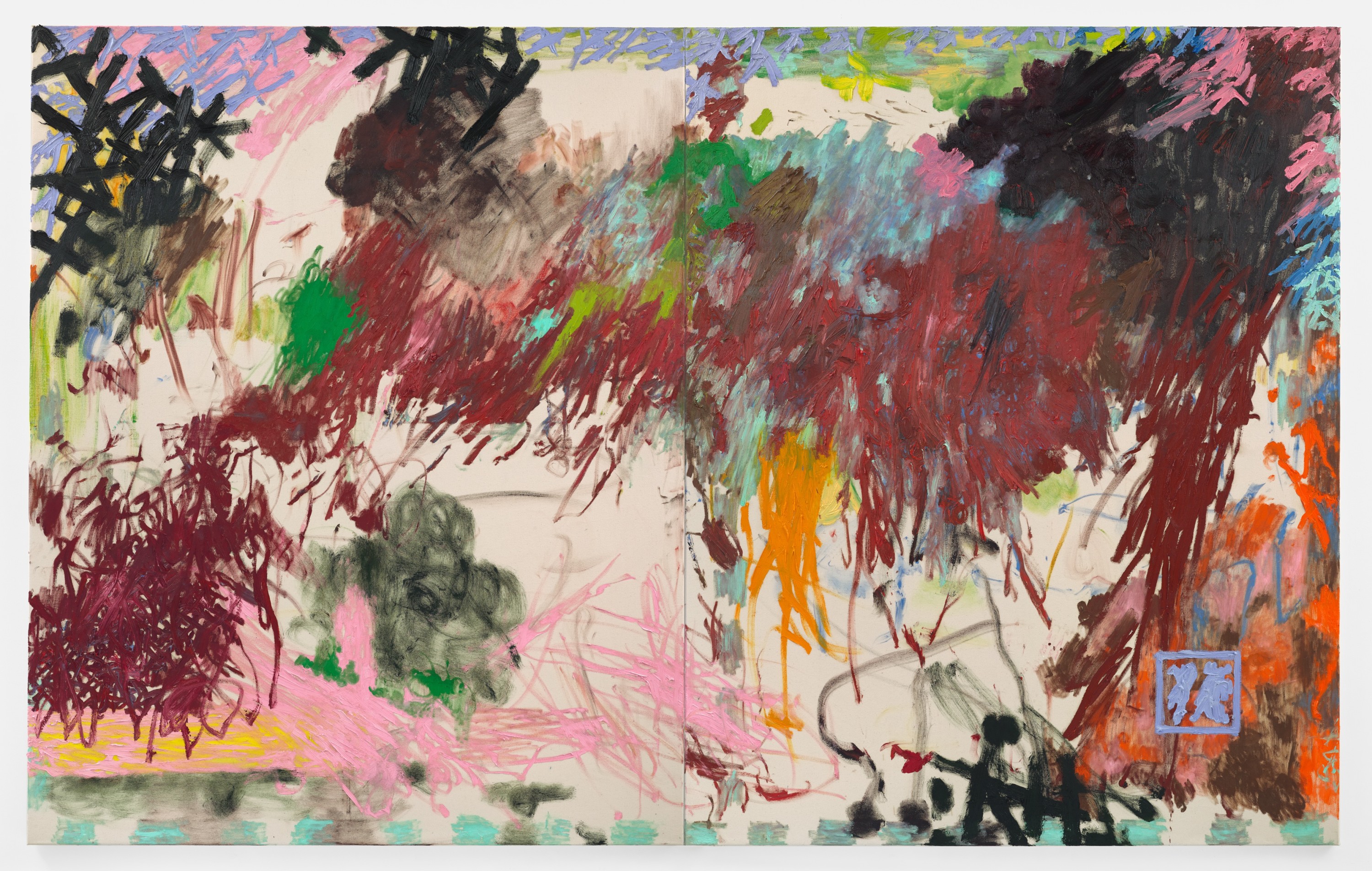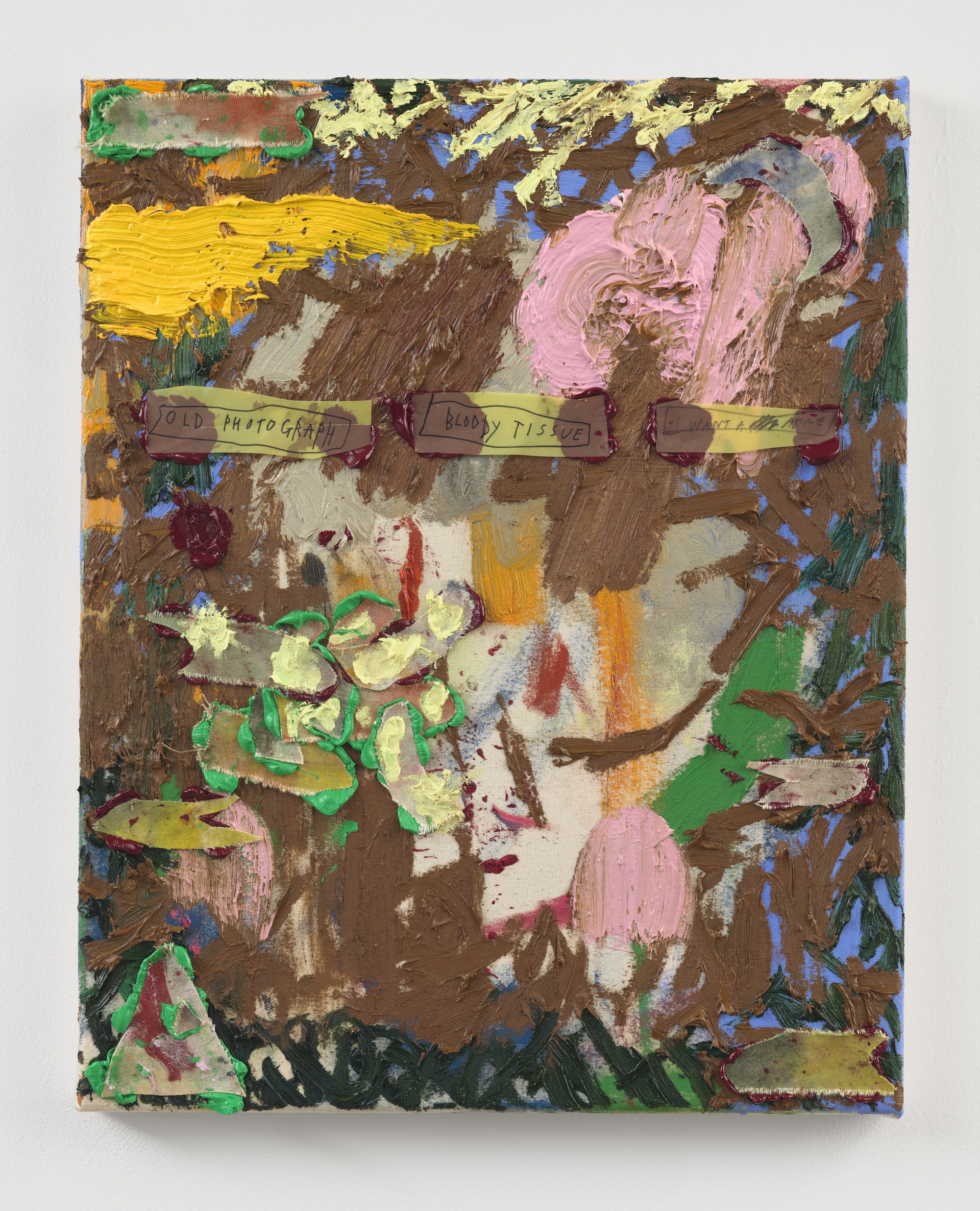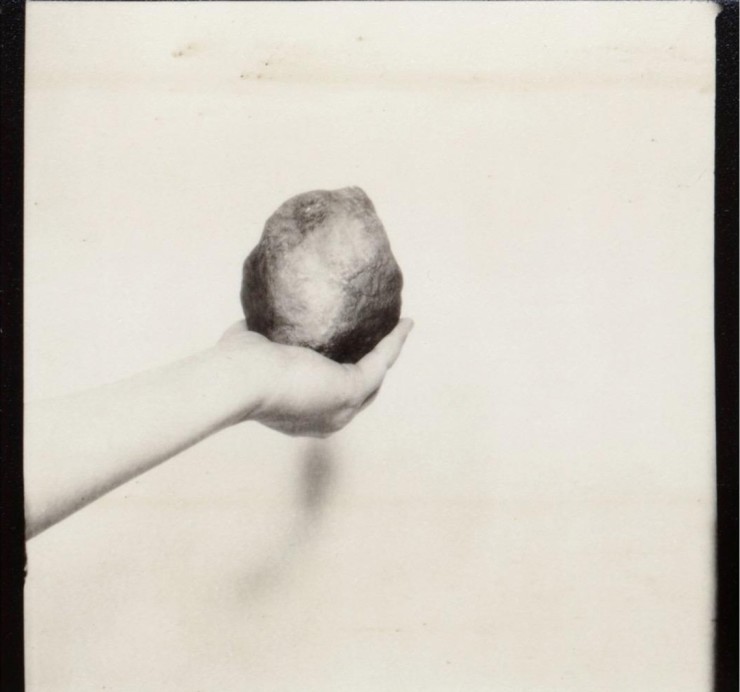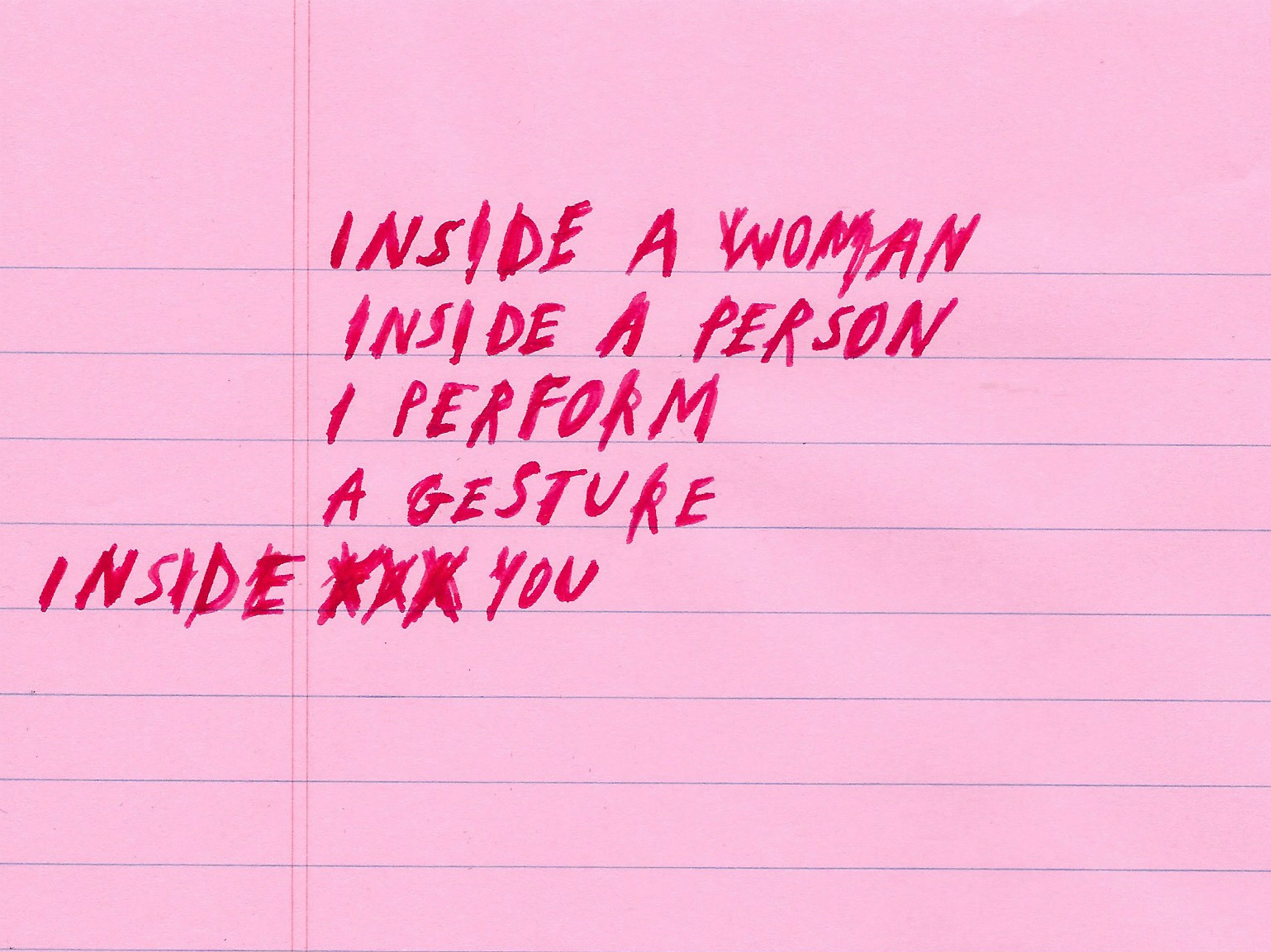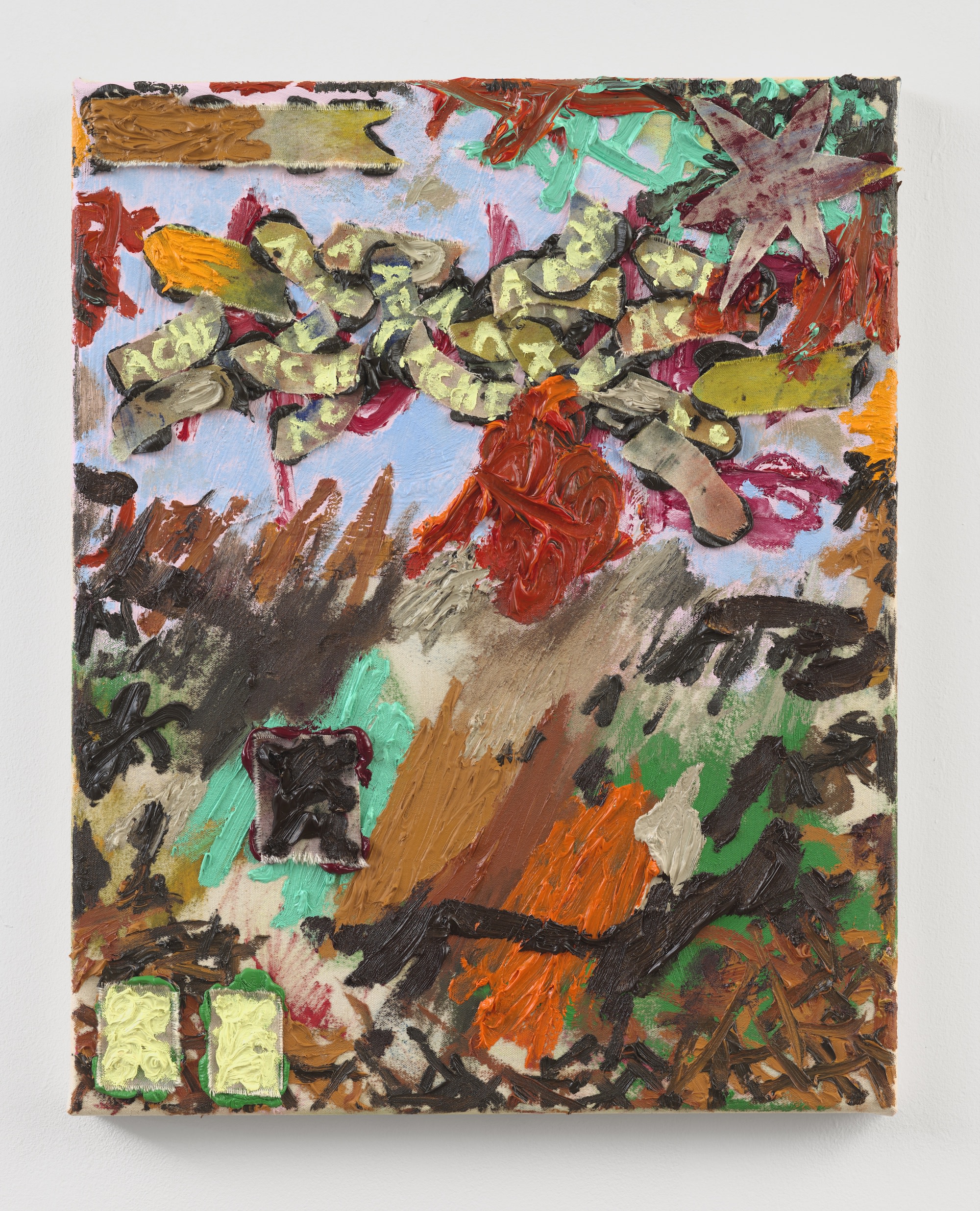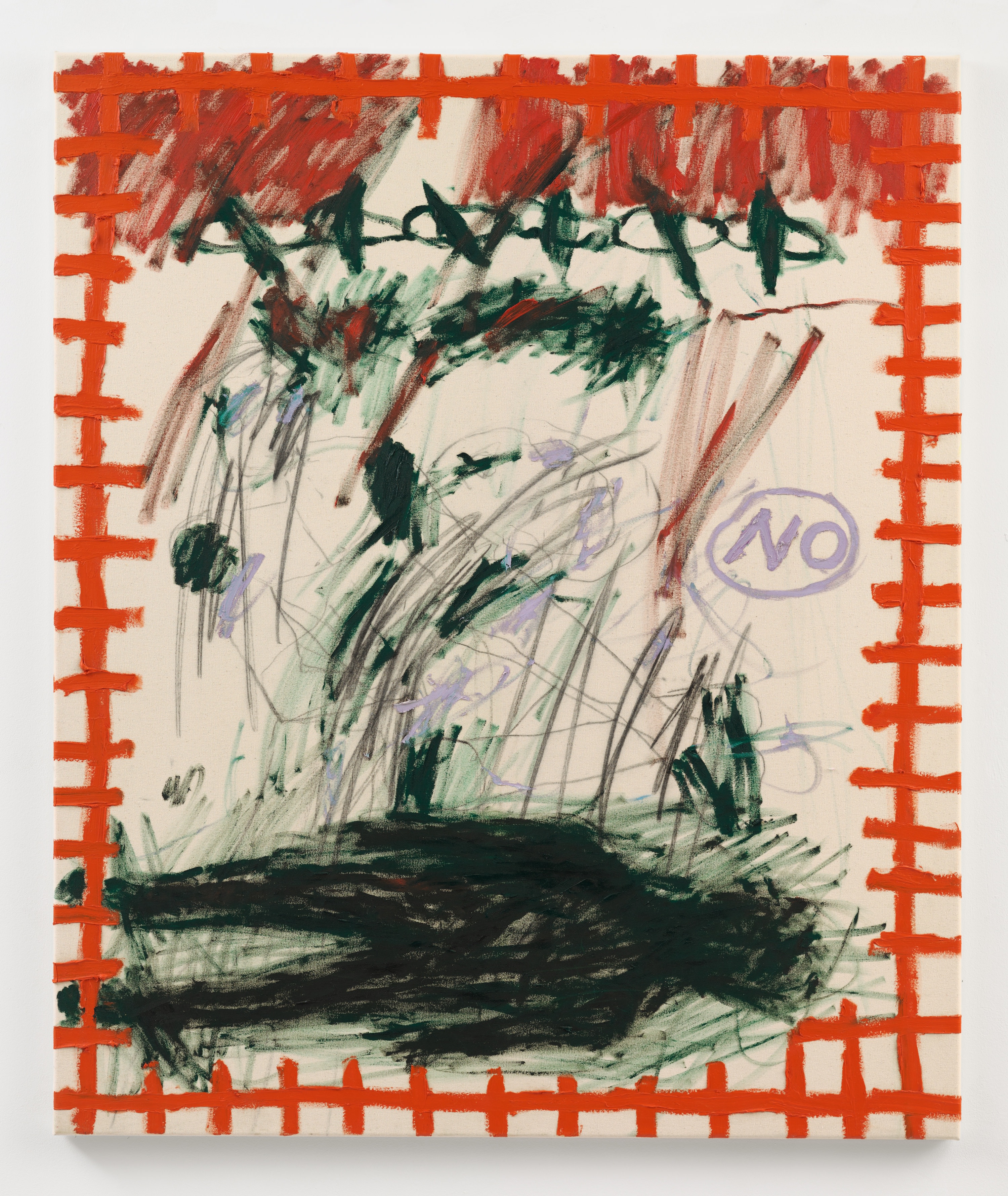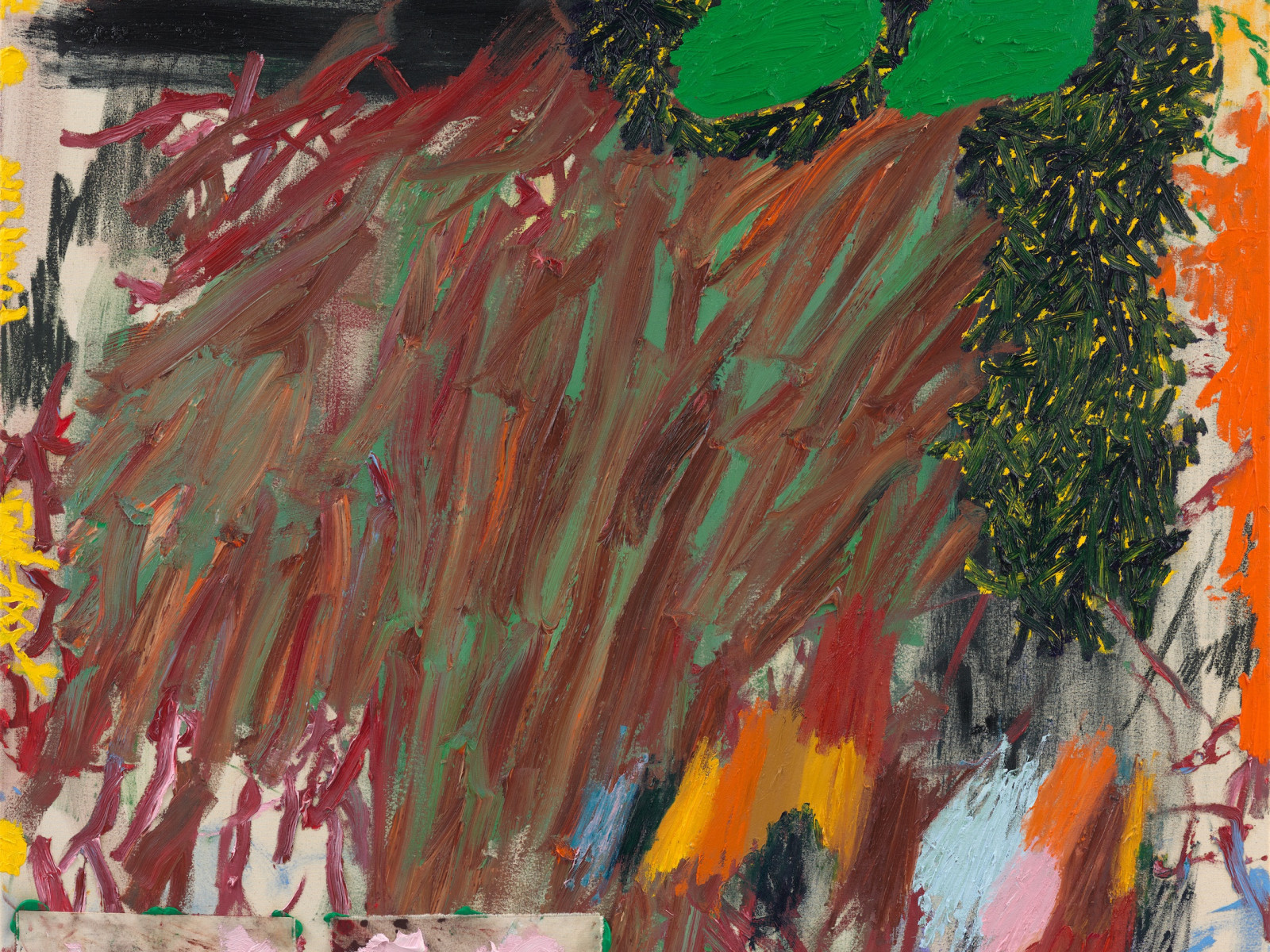-

DAISY PARRIS IN CONVERSATION WITH SIM SMITH
Parris (right, photographed by Katie Haughton), Smith (left, photographed by James Frederick Barrett) -
Zoom call 20th November —
SIM: I'd really like to talk a bit more about you and your work, sharing where the paintings come from. The psychology and the physicality of the works, your colour choices, mark making and the raw emotion of what you are painting. The work is so abundant and there are little gifts that you give, allowing glimpses that others recognise in themselves; certain sentiments and feelings that resonate with them within the works. Let's start there, let's talk about that…
DAISY: Yeah, I mean, they have always been full of hope. It's funny they could easily be confused with just being fun little colourful paintings, or just so dark, but they are never quite what they seem. They are beyond both things, they are both things, but they also are deeper than that.
Since school I've been interested in the relation of colour to emotion and that fact that colour isn't quite what it seems. Yellow isn't necessarily happy, red isn't necessarily angry, all of those generalised, token emotions relating to colours don't necessarily go together. For me over the years, different colours have represented different things. For example, mint green for me has always represented death, and I have been exploring pink for years - pink isn't what it seems, it never is, it's not just a nice feminine colour it's actually really brutal and disgusting and sickening and when paired with brown and mint green it really scares me. I'm using a lot of red at the moment as well and that is a direct reference to blood basically. That leads onto other things, of it being of the body…. placing these different emotions and colours together.… the red is so dark, when I'm painting it I have to go to quite a dark place but there is always hope at the end of that. Yellow is a really healing colour for me at the moment, it symbolises a lot of hope and light.
SIM: I've heard you talk about the painting being 'from the body' quite a lot and I really feel that. For me they are undeniably female, from the female body. For me you paint from your gut, from somewhere sacred. They have a sense of female power to them; the girl, the mother, nurturing love and loss. When you talk about your paintings being made from the body where do you see them being made from?
DAISY: Definitely from the guts, from the deepest darkest soul. It's interesting that you see them as female. I identify with my female side, but I do feel other and androgynous. All of that is going in the paintings somehow. I find painting completely neutral. I am neutral in my identity, but I am very in touch with the female side of things. I was raised by women. My relationship with women is…well, that's all I know, womanhood. There is nothing like the way women bond or the way women deal with pain.
-
 Suck The Pleasure Out Of Everything, 2020oil on canvas200 × 320 cm (78¾ × 126 in)(DP125)
Suck The Pleasure Out Of Everything, 2020oil on canvas200 × 320 cm (78¾ × 126 in)(DP125) -
 Until You've Seen Everything, 2020oil and collage on canvas200 × 180 cm (78¾ × 70¾ in)(DP138)
Until You've Seen Everything, 2020oil and collage on canvas200 × 180 cm (78¾ × 70¾ in)(DP138) -

Sadness Comes and Goes Throughout The Day (Yellow), 2020
oil and collage on canvas
50 × 40 cm (19¾ × 15¾ in)(DP131) -
SIM: Yes, I couldn't agree more, they have always resonated with me. They make me think of lived experience as a woman; me personally, as my friends, as the women in my family but also universally, to lived experience as people with no descriptions or boundaries. For me they are very much about power, survival and potential and that is why they affect people so deeply.
DAISY: It's funny because my sisters are my heroes and I did a painting that you had at the gallery called 'My Sisters' Are My Heroes', and I do a lot of paintings for my sisters, because we are unstoppable. As groups of women, we are all we've got and we're unstoppable. A lot of my work is an ode to my sisters and an ode to surviving. It's all in there because that is how I've been raised.
SIM: We're in interesting territory, talking about what may and may not be considered female or feminine. Even down to colour; pink and red which you use all the time, they would be traditionally considered as very feminine colours but as you have said preconceptions around colours are quite odd really.
DAISY: Pink is my favourite colour which is strange because when you look at me you wouldn't think that. I just don't understand gendered colours, but I really studied pink and it's come out as my favourite colour at this moment in my life when I feel at my most androgynous. I find that really interesting, empowering and defying.
-

-
 No More Pain For You, Please, 2020oil and collage on canvas150 × 130 cm (59 × 51 ¼ in)(DP133)
No More Pain For You, Please, 2020oil and collage on canvas150 × 130 cm (59 × 51 ¼ in)(DP133) -
 Self Portrait At Night, 2020oil paint and collage on canvas50 × 40 cm (19 ¾ × 15 ¾ in)(DP132)
Self Portrait At Night, 2020oil paint and collage on canvas50 × 40 cm (19 ¾ × 15 ¾ in)(DP132) -
 Old Photograph, Bloody Tissue, I Want A Home, 2020oil, collaged canvas and paper on canvas50 × 40 cm (19 ¾ × 15 ¾ in)(DP140)
Old Photograph, Bloody Tissue, I Want A Home, 2020oil, collaged canvas and paper on canvas50 × 40 cm (19 ¾ × 15 ¾ in)(DP140) -
SIM: You talked about your sisters and when looking at your work, there are obviously autobiographical elements in there. Particularly in your drawings we see melancholic, threatening or familiar domestic spaces that often reflect elements of your life. Some of these end up as motifs in paintings again and again. One such motif is the rock, could you talk a bit about how it came into existence in your work?
DAISY: I've been working with the rock for years; it's left me a little bit now but it's still in there. It could symbolise violence, holding the weight of the rock in your hand waiting to smash something in but it also symbolises building and the potential to build or knock something down and re-build. It's the extremes and the history of certain things; memory and nostalgia, where things have come from. Although that is in relation to the earth, I'm thinking of it in relation to the body and humans as well; where we come from, where we've been and where our parents have come from and where they have been. I just think it holds so much opportunity and mystery, it's so fascinating.
SIM: I know you also talk a lot about the soul in respect to your work. Can you talk a bit about that?
DAISY: I guess I'm really in touch spiritually, it sounds a bit strange but I'm really sensitive to human energy and I always have been since I was a kid. I think that is just from coming from a big family, being very quiet and observing human behaviour my whole life. The last few years with my paintings I have been processing what I've been through and what I have seen and learning to communicate, firstly in the paintings and also verbally. I'm just so in touch with my soul and I know when it's not well. I think people should be very mindful of their souls and their energy [laughs] I sound like a witch!
SIM: [also laughs] You're in good company here…
DAISY: I'm so desperate for my soul to connect with other souls and I think the only way is to be honest about what you feel and in return good energy and fulfilment will come your way. Because I've been a very quiet person and not a good communicator, looking inwards; my soul, my mind and my heart had been the only way…it's all I've had. I don't know why but I always ask myself why does painting facilitate that and I don't have the answers but it just does. It's essential to my soul, it has to come out this way. The process of it passing into something physical helps me understand it more and understand the world around me.
-
Rocks
Rocks in photo booth (photo automat, Hamburg, Germany) 2014 -

-
 I Saw A Rat Yesterday And Thought Of You, 2020oil paint and collage on canvas150 × 130 cm (59 × 51 ¼ in)(DP136)
I Saw A Rat Yesterday And Thought Of You, 2020oil paint and collage on canvas150 × 130 cm (59 × 51 ¼ in)(DP136) -
 Pink At Night, 2020oil on canvas150 × 130 cm (59 × 51 ¼ in)(DP135)
Pink At Night, 2020oil on canvas150 × 130 cm (59 × 51 ¼ in)(DP135) -
SIM: I may be wrong, but I don't see you as a painter who loses herself in painting. Knowing you as I do, I see you digging yourself up for them, excavating experiences. Painting is not an escape but very much a working through. You work through things psychologically, emotionally, physically, working on different scales. Does working to different sizes offer you different opportunities?
DAISY: I used to be able to paint mindlessly. When I was younger, I thought I wasn't painting anything with any purpose but even that was full of soul. But now I am in touch and aware a lot more when I paint. I have to be careful with what it takes from me as well. Staying in a dark place to paint for long periods of time I find very difficult, so part of the process now is finding ways to touch upon that but not make myself unwell. The small pieces and drawings I do are the most intimate pieces. I learnt to do art through the journal and the sketch book so to me, the size of a page, it's throw-away, if you mess it up you can turn the page. I'm applying that onto the small works on paper and small canvases. Within that frame it allows me to put the most revealing, embarrassing, intimate things in and I don't think about it because they are so small, I feel I can hide them away and nobody is going to see them. It gives me so much room. Whereas with the large pieces, there is so much to think about, it's so daunting. To a certain extent I can lose myself in large fields of colour and brushstrokes but with the small pieces I am just in my head. It's a really close dialogue between me and the surface, or the images and the colours I'm using but with big pieces I am just so overwhelmed. I am so aware of how small I am in relation to the canvas and in relation to the world. I like showing I'm capable, they are a challenge to myself, like 'I dare you' and I love that. I love living up to it.
SIM: I think there is a huge amount of courage and ambition to your work. And when I say ambition, I mean in painting, rising to a challenge but also an ambition in moving forward towards something positive.
DAISY: Yeah, I don't know, I think I thought big paintings were something all the boys did. I've always wanted to try it, but I didn't know how because I thought it was a boys thing. I just got to a point where I found out a way to do it and that is using panels that are in direct relation to my body, as in they are the biggest and widest things I can manage in relation to my body. If you put four of these together you can get a huge piece that becomes beyond the body and of the world, I guess. I kind of want to scare myself with the scale, I want it to go beyond comprehension because I just love losing myself in painting and I love reflecting. Seeing that much colour, I know I've made it, but I can disconnect from the intimacy of it and allow myself to lose myself. When it's finished, I allow myself the looking process that other people will get and that's really important to me.
-

Smash My Head In, 2014, rock, oil paint and paper
-
 Green Drips, 2018oil and acrylic on canvas184 × 150 cm (72½ × 59 in)(DP089)
Green Drips, 2018oil and acrylic on canvas184 × 150 cm (72½ × 59 in)(DP089) -
 Yellow, 2018oil on canvas184 × 150 cm (72 ½ × 59 in)(DP105)
Yellow, 2018oil on canvas184 × 150 cm (72 ½ × 59 in)(DP105) -
SIM: What is it you think people see or what do you want people to get when they are standing in front of a 5-meter-long Daisy Parris?
DAISY: I want them to feel some sort of energy and that could be an inkling, a tiny connection between humans, from one human to another. Obviously, it's passed through the surface of a painting but that is just one way of connecting with other humans. I want them to feel some energy or some hope or just a point of reflection, a place they can slow down and reflect and lose themselves in colour.
-
 Things I Shouldn't Keep, 2020oil and collage on canvas110 × 90 cm (43¼ × 35½ in)(DP134)
Things I Shouldn't Keep, 2020oil and collage on canvas110 × 90 cm (43¼ × 35½ in)(DP134) -
 Under The Stars, 2020oil and collage on canvas50 × 40 cm (19 ¾ × 15 ¾ in)(DP139)
Under The Stars, 2020oil and collage on canvas50 × 40 cm (19 ¾ × 15 ¾ in)(DP139) -
 Blood, 2017oil paint on cardboard85 × 60 cm (33½ × 23½ in)(DP141)
Blood, 2017oil paint on cardboard85 × 60 cm (33½ × 23½ in)(DP141) -
 The Skin, 2017oil and charcoal on canvas122 × 102 cm (48 × 40¼ in)(DP142)
The Skin, 2017oil and charcoal on canvas122 × 102 cm (48 × 40¼ in)(DP142)
DAISY PARRIS — New paintings
Past viewing_room

